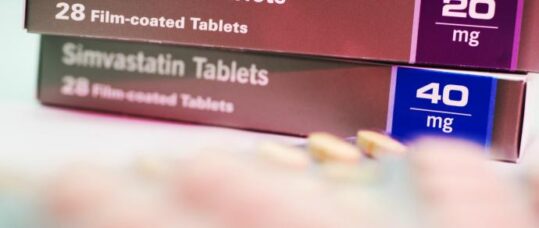Half of patients on statins have ‘sub-optimal’ reduction in cholesterol

Half of patients taking statins had a ‘sub-optimal’ response to the treatment, a study has found, leading to calls for statin regimens to be tailored to individual patients.
Patients who didn’t achieve NICE-recommended reductions in LDL-C were more likely than those who did to suffer cardiovascular events, the researchers found.
They found that 51% of patients on statins had a sub-optimal response to therapy after two years on treatment, meaning that they hadn’t achieved a greater than 40% reduction in LDL-C levels.
Related Article: Diagnosis Connect service will link people to advice from charities
When figures were adjusted for age, sub-optimal responders were 22% more likely to experience a CVD-related event, such as coronary artery disease, stroke or TIA, or peripheral vascular disease, than optimal responders.
Sub-optimal responders were also 25% more likely to die of CVD-related causes.
The study was carried out by primary care researchers at the University of Nottingham and looked at just over 165,400 primary care records for patients who were started on a statin between 1990 and 2016.
The authors said that the findings highlighted the need for statin therapy to be personalised to individuals.
Related Article: CVD prevention must be national health priority, says report
They said in the paper: ‘Based on evidence from clinical trial settings, the response of patients to statins varies widely, with reductions in LDL-C values following the administration of statins ranging from 5-70%
‘Currently, there is no management strategy in clinical practice which takes into account patient variations in LDL-C response, and no guidelines for predictive screening before commencement of statin therapy. Validated clinical decision tools which can predict cholesterol response to statins, or to non-statin drugs, with interventions to help clinicians to tailor and optimise statin treatments for individual patients are needed.’
The findings come as Public Health England launched a campaign in February to increase the proportion of 40-74 year old patients receiving blood pressure and cholesterol checks to 75% by 2029. The campaign also wants to see 45% of patients at high CVD risk treated with statins by 2029 – up from the current proportion of 35%.
Related Article: Prescribing in England to be led by a single national formulary
Professor Jamie Waterall, national lead for cardiovascular disease prevention at Public Health England, said: ’Current recommendations on statin use are based on robust and extensive evidence and it is widely accepted that the benefits of statins far outweigh any possible adverse effects.
’It’s important that statins are taken as prescribed and optimising their use in line with NICE guidance is vital to help prevent thousands of avoidable heart attacks and strokes.’

See how our symptom tool can help you make better sense of patient presentations
Click here to search a symptom


Half of patients taking statins had a ‘sub-optimal’ response to the treatment, a study has found, leading to calls for statin regimens to be tailored to individual patients.



